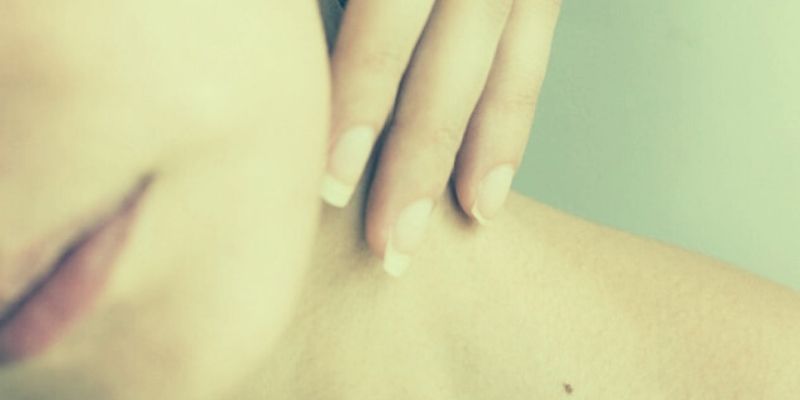When your dreaded monthly period starts, you may experience discomfort in your abdominal area, known as menstrual cramps. This discomfort might last for two to three days. Menstrual pain might be subtle or acute, and they can ache or throb.
Menstrual pain symptoms might range from a little discomfort to severe pain that prevents you from doing your daily tasks. In women under 30, period pains are the biggest reason for absenteeism!
We bet you didn’t know that almost all women with menstrual cycles face some agony during their periods, and still, almost ten percent of them are momentarily handicapped by these symptoms.
Many suffered have begun reaching for a TENS unit in search of pain relief. Does it even work? And with all those pads, how do you set it up correctly? In this article, we take a look at where to put a tens unit for menstrual cramps and explain what to do to find period relief.
Transcutaneous Electrical Nerve Stimulation (TENS)
TENS (transcutaneous electrical nerve stimulation) is a pain-relieving procedure for pain that uses the tiniest electrical impulses. A TENS Unit is a battery-operated gadget that sends electric stimulation to the skin’s surface using electrodes.
The electrodes are put on or near nerves or trigger sites where pain is present (or even for muscle-building!).
Transcutaneous electrical nerve stimulation (TENS) is thought to act in two ways. According to research, the electrical stimulation activates nerve fibers, inhibiting the passage of pain signals, and altering your pain experience.
TENS uses soothing pulses in order to alleviate pain as it sends signals to the brain, and the pulses suppress pain signals. Another notion is that nerve activation increases endorphin levels, which are the body’s natural painkillers. The endorphins subsequently work to inhibit pain perception.
Where to put a TENS unit for menstrual cramps
No products found.The electrode pads should be focused around the area of discomfort. According to research, many women find relief with the following placement:
The electrode pads should be placed towards the pelvic area. Keep the pads about 1-2 inches from each other, and surround the location of the pain.
The electrode pads should be placed towards the pelvic area. Keep the pads about 1-2 inches from each other, and surround the location of the pain.
In order for the TENS unit to generate constant pulses, be sure to carefully push on the electrodes pads to achieve good contact with the skin.
You can always play a little with the positioning to see where the pain is the most intense, and which locations provide the most relief. When it comes to menstrual pain, there’s some trial and error.
Begin with the minimum setting, then gradually raise it until you experience a strong pulsing sensation. The kind of TENS unit will determine the setting or mode to employ. To get the greatest results, use a wave setting.
Menstrual cramps are known to cause lower back discomfort. Backaches can also be relieved with the use of a TENS device.
No products found.Using TENS units to relieve discomfort from pain and various other conditions is a safe and efficient method. Here are five suggestions for obtaining the most use out of the TENS unit while using it:
- Never put the electrode pad over injured skin when using TENS units since it will cause discomfort.
- Ensure the area where the electrode pads will be placed is clean first. The TENS unit sticky pads will cling to the flesh better if any oils or debris are removed from the area. The TENS pad would last longer as well. Also, make sure that you have extra replacement pads available.
- Always begin with the extreme bottom TENS setting, then gradually raise the intensity until you experience a pleasant pulsing sensation. Reduce the setting when you experience any pain or discomfort.
- When putting the electrode pads on the target location, keep them about 1 inch apart.
- Utilize the TENS device for 20 to 30 minutes every session to achieve excellent pain relief. You can use the gadget numerous times each day.
- Cervical stenosis: it is a condition in which the neck is narrowed. The aperture of the cervix in certain women is too narrow to allow menstrual flow, resulting in an excruciating rise in uterine pressure.
TENS Unit Research and Testing
TENS machines for pain treatment have had mixed and inconclusive outcomes. Patients have experienced pain reduction after using TENS in several trials. TENS frequency is among the most investigated characteristics, with high frequency (> 50 Hz) and low frequency ( 50 Hz) categories.
In some investigations, menstrual pain alleviation through TENS was not statistically different from that reported by “placebo” TENS units; in others, the findings were superior to the control group.
The type of ailment for which agony treatment is needed, where the wires are attached to the body, and the parameters of the TENS unit itself can all affect efficacy (intensity, pulse frequency, duration, and type).
According to the investigators, the lack of randomized studies comparing TENS to standard treatment makes evaluating the efficiency of TENS challenging. Further research is required.
There have been minimal known negative effects from TENS treatment. Patients have suffered burns at the electrode placement locations on a few occasions. Some people may be sensitive to the glue used to secure the pad to the body or the ingredients within the pad or may have some allergic reactions.
And the tingling/prickling sensation caused by the TENS machine may be irritating or unpleasant for some persons.
Menstrual Cramps
Menstrual pain is most frequent in young women and adolescent girls during the start of their menstrual cycle.
Menstrual pain can cause the following symptoms:
- Lower-abdominal throbbing or cramping discomfort that can be excruciating and may feel painful
- Pain that begins one to three days before your menstruation intensifies 24 hours once your period begins and fades in two to three days
- A dull, constant discomfort that waits
- Pain that extends to your lower back and thighs
- You experience muscle pain
Some also suffer from:
- Nausea
- Stools that are too loose
- Migraine
- Lightheadedness
Consult your doctor if you experience any of the following symptoms:
- Period pains that cause problems in your life.
- Your symptoms are becoming worse.
- After the age of 25, you began to have terrible menstrual cramps.
Causes of Period Pain
According to health centers worldwide, your uterus tightens throughout your menstrual cycle to assist shed of its inner lining. The contractions of the uterine tissue are triggered by hormone-like molecules (prostaglandins), which are implicated in inflammation and pain. More intense period cramps are related to increased grades of prostaglandins.
During periods, the cells that make up the uterine lining, also known as endometrial cells, start to deteriorate and generate too much prostaglandin. These substances cause severe cramps by constricting the blood arteries in the womb as well as contracting the muscular layer.
Period pain can be induced by a variety of factors, including:
- Endometriosis. The muscle that lines the uterus can get implanted outside of your uterus, most typically on the ovaries, fallopian tubes, or pelvic tissue.
- Fibroids in the uterus. These noncancerous expansions in the uterine wall can be painful.
- Adenomyosis. The muscle that surrounds your uterus starts to expand onto the muscular barriers of the uterus.
- Pelvic inflammatory disease (PID) is a condition in which the lining of sexually transmitted germs is the most common cause of disease of the female reproductive organs.
If any of the following apply to you, you may be at risk for menstrual cramps:
- You’re under 30 years old.
- At the age of 11 or earlier, you begin puberty.
- During menstruation, you bleed profusely (menorrhagia)
- You’re having trouble with your menstrual cycle (metrorrhagia)
- You possess a record of painful menstruation in your family ( dysmenorrhea)
A problem with the reproductive system causes secondary dysmenorrhea. The agony becomes greater with time and lasts far longer than regular period cramps. For instance, the pain might start a few days before your period. The discomfort may worsen as the menstruation progresses and may persist after it has ended.
The cramping discomfort that occurs during or before a period is primary dysmenorrhea. It is a type of pelvic pain that occurs shortly after you start menstruation and is caused by your period. A natural substance called prostaglandin, produced in the uterine lining, induces this discomfort—the uterus’ blood vessels and muscles contract due to prostaglandins.
However, some diseases linked to painful menstrual cramps might lead to difficulties. Endometriosis, for instance, can lead to infertility. Pelvic inflammatory illness can damage the fallopian tubes, making it more likely that a fertilized egg will implant outside of your uterus (ectopic pregnancy).
Conclusion
In this article, we looked at where to put a tens unit for menstrual cramps.
While there is little solid research on it, many do find relief from period pains by using a TENS unit. It is completely non-invasive and drug-free.
Place the pads right near the primary pain areas like the pelvis, and spread them 1 to 2 inches apart. Tweak the location as you go to find relief. TENS works by sending relaxing pulses into the body and through nerve fibers through pads. The pulses suppress pain impulses to the mind.
See also:





